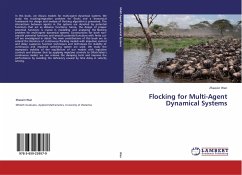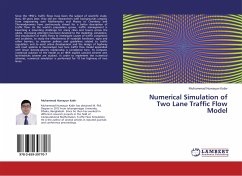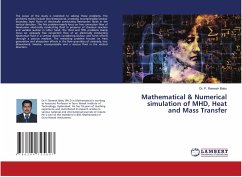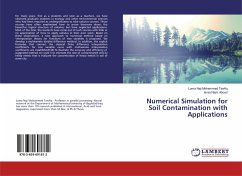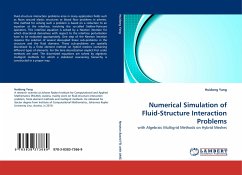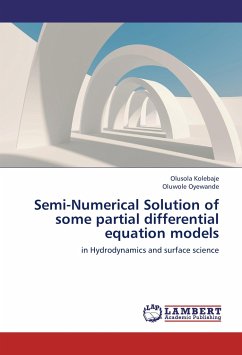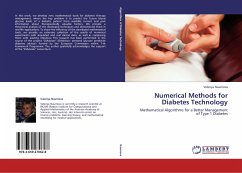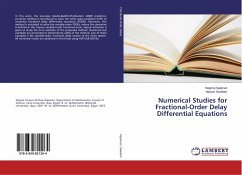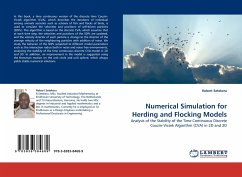
Numerical Simulation for Herding and Flocking Models
Analysis of the Stability of the Time Continuous Discrete Couzin-Vicsek Algorithm (CVA) in 2D and 3D
Versandkostenfrei!
Versandfertig in 6-10 Tagen
32,99 €
inkl. MwSt.

PAYBACK Punkte
16 °P sammeln!
In this book, a time continuous version of the discrete time Couzin-Vicsek algorithm (CVA), which describes the iterations of individual among animals societies such as schools of fish and flocks of birds, is used to simulate the velocities and positions of self-driven particles (SDPs). This algorithm is based on the discrete CVA, which assumes that at each time step, the velocities and positions of the SDPs are updated, and the velocity director of each particle is change to the director of the average velocity of the neighboring particles with addition of noise. We study the behavior of the ...
In this book, a time continuous version of the discrete time Couzin-Vicsek algorithm (CVA), which describes the iterations of individual among animals societies such as schools of fish and flocks of birds, is used to simulate the velocities and positions of self-driven particles (SDPs). This algorithm is based on the discrete CVA, which assumes that at each time step, the velocities and positions of the SDPs are updated, and the velocity director of each particle is change to the director of the average velocity of the neighboring particles with addition of noise. We study the behavior of the SDPs subjected to different model parameters such as the interaction radius both in noise and noise free environments, analyzing the stability of the time continuous discrete CVA-model in 2D and 3D. In addition, an improvement in the model is suggested using the Brownian motion on the unit circle and unit sphere, which always yields stable numerical solutions.



